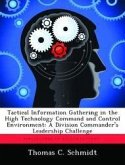Military readiness has been and continues to be a paramount priority of our government and Department of Defense (DoD) to perform a broad spectrum of mission capabilities. The challenge to conduct and sustain the DoD missions with short notice to any point on the globe involves pulling together reliable equipment, proven procedures, and proficiently skilled personnel to respond to a contingency tasking, deploy with minimal delay, and conduct operations. Of this description, the mobility readiness of personnel remains a key enabling factor. A squadron commander directly affects the readiness of their troops by the priorities he or she places on: training core-skills, exercising realistic contingency scenarios, establishing a mobility mindset, and ensuring proficiency in wartime skills. The primary research question addressed in this paper is: "How does a commander most effectively measure, track, interpret and affect the personnel readiness of his/her mobility squadron?" This research solicited insight and feedback from mobility experts and past commanders. This insight consolidated into seven readiness-enabling factors to serve as a practical guide for new commanders, providing a perspective from which to approach their role and responsibility in enabling personnel mobility readiness. This work has been selected by scholars as being culturally important, and is part of the knowledge base of civilization as we know it. This work was reproduced from the original artifact, and remains as true to the original work as possible. Therefore, you will see the original copyright references, library stamps (as most of these works have been housed in our most important libraries around the world), and other notations in the work. This work is in the public domain in the United States of America, and possibly other nations. Within the United States, you may freely copy and distribute this work, as no entity (individual or corporate) has a copyright on the body of the work. As a reproduction of a historical artifact, this work may contain missing or blurred pages, poor pictures, errant marks, etc. Scholars believe, and we concur, that this work is important enough to be preserved, reproduced, and made generally available to the public. We appreciate your support of the preservation process, and thank you for being an important part of keeping this knowledge alive and relevant.
Bitte wählen Sie Ihr Anliegen aus.
Rechnungen
Retourenschein anfordern
Bestellstatus
Storno







